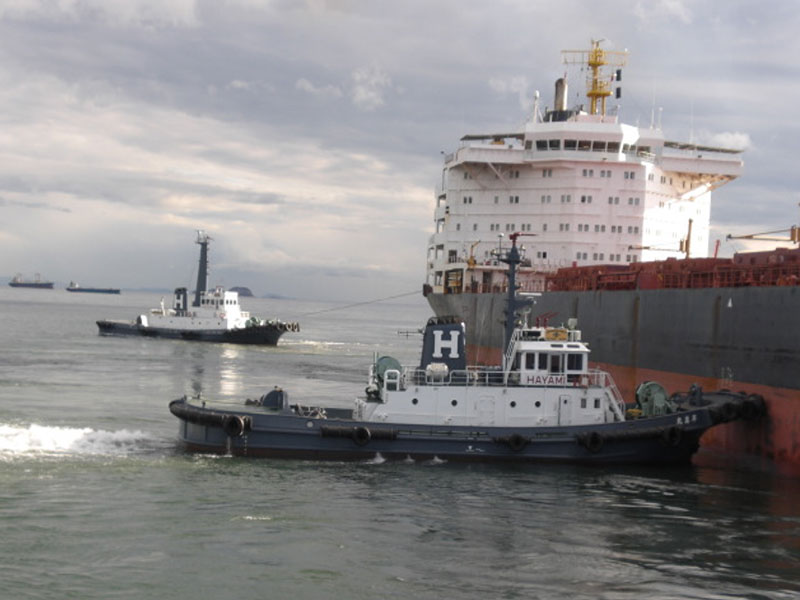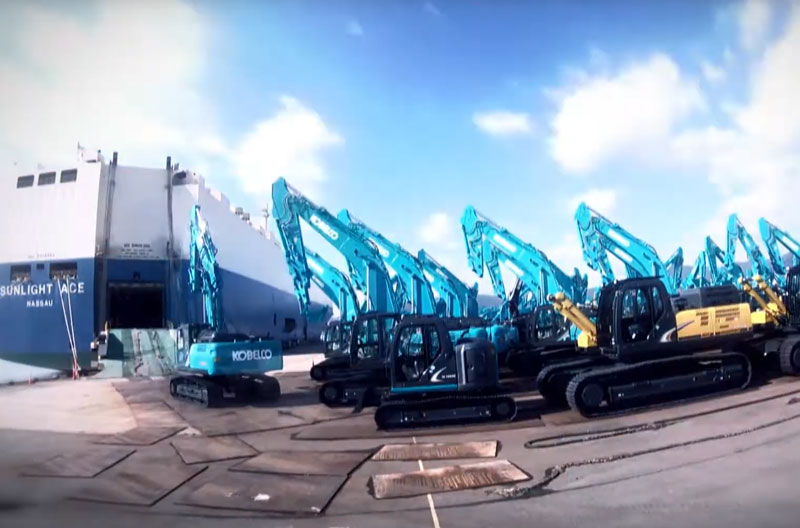

Our agency operations for vessels involve handling the various procedures vessels must complete to enter and leave ports. In addition, we can represent shipping companies and incoming or outgoing vessels.
To facilitate vessels’ smooth and safe entry and exit from ports, we provide commissioned services mainly to vessels at Kobe Steel’s Kakogawa Works, Kobe Wire Rod & Bar Plant, and Kobe Electric Power Plant.
Before an ocean-going vessel enters a port, it is necessary to notify the Japan Coast Guard prior to entering Japan’s national waters, and a commissioned agent can make this communication. Other entities, including the Ministry of Land, Infrastructure and Transport, tax agencies, and quarantine stations must also be notified. We are equipped to handle the relevant specialized procedures with the timing that they require.
Many of the vessels we are commissioned to provide services to are large, and we are able to arrange experienced and expert pilots and tugboats to aid in maneuvering when such ships are unable to dock or leave port unaided as well as when they must navigate harbors and narrow straits.
After docking, we provide meticulously coordinated support, for example, arranging for the loading of goods, restocking of drinking water, and refueling in addition to furnishing services related to the benefits enjoyed by vessel employees.
Case 1
The largest vessel that uses the wharf at the Kakogawa Works is 319 meters long, a span that the Abeno Harukas, the tallest skyscraper in West Japan, if laid down on its side could comfortably fit within. In addition, the ship’s draft (how far below the waterline the hull extends) is 16.5 m, roughly equivalent to the height of a five-story building. Thanks to our agents, this ultra-large ship safely enters and exits the port on schedule. For large ships, arrivals at the port are limited to high tide,* so tugboats with 4,000 horsepower are used to support up to five ships at once, bringing them in to port using a method that is accurate to the centimeter (see photo).
On land, heavy machinery is used in coordination with affiliated mooring vessels to haul thick ropes (hawsers) that draw ships into position and, acting precisely and in close cooperation, gently dock them at the wharf.
Because ships are in motion every hour of every day, constant vigilance is imperative in accommodating their movements as well as loading and unloading schedules. Furthermore, when a storm strikes or a problem arises, we must be ready to provide full support when requested to aid in procedures related to managing port entry and exit.
* High tides: the timing where the water from a tide is at its highest point in the ebb and flow of tides

Case 2
In addition to providing agency services for the Kakogawa Works wharves at the ports of Kobe and Higashi-Harima, we accept commissions for agency operations for ocean-going vessels that enter and leave various public wharves and the Port of Takasago. Many are normal cargo vessels, but we also provide agency operations for RORO vessels (see photo). Because RORO vessels are loaded with cargo vehicles capable of autonomous operation, such as cars and construction machinery, loading and unloading is swift. While working together to load and unload these vessels on a moment-to-moment basis, we also closely collaborate with shipping companies, tugboats and pilots to allow them to enter and leave port without delay.
